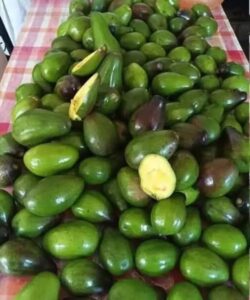Gallbladder surgery, also known as a cholecystectomy, is a common procedure for treating conditions like gallstones, acute cholecystitis, and gallbladder pancreatitis. While the gallbladder is not essential for survival, its removal can lead to several changes in your body. Post-surgery, it’s important to be aware of potential side effects and adopt the right dietary practices to ensure a smooth recovery. This article will walk you through what to expect after gallbladder surgery and offer some practical dietary tips for managing your recovery.
1. Changes in Your Body After Gallbladder Surgery
Following gallbladder removal, your body will undergo several adjustments. While many people live perfectly normal lives without a gallbladder, some experience side effects that can affect daily life, especially in the first few weeks.
Bloating and Indigestion: A common issue for many patients after gallbladder surgery is bloating. This occurs because, without the gallbladder, your body’s ability to digest fats is less efficient. Without the organ that normally stores bile, bile continuously flows into your intestine, which can lead to gas, indigestion, and bloating.
Diarrhea: Studies show that up to 20% of individuals experience diarrhea after gallbladder surgery. This happens because bile flows directly into the intestine, which can irritate the bowel. It’s crucial to stay hydrated and manage your diet carefully to prevent dehydration and maintain digestive health.
Post-Cholecystectomy Syndrome: About 5-40% of patients report experiencing what’s known as Post-Cholecystectomy Syndrome, which includes symptoms like nausea, upper abdominal pain, and digestive issues. These are often due to irregular bile flow or leftover stones in the bile ducts, a condition called Choledocholithiasis.
Bile Acid Malabsorption: Some people experience bile acid malabsorption, which occurs when excess bile enters the colon, leading to bile acid diarrhea and poor fat absorption. Around 5-10% of patients deal with this issue post-surgery.
2. Changes in Appetite and Weight
After gallbladder surgery, some patients struggle to eat certain foods, particularly fatty or greasy foods. This is often a short-term issue, but some people find they need to make long-term dietary adjustments. In some cases, weight changes—either gain or loss—may occur. These changes aren’t directly caused by the surgery but may be linked to new dietary habits or challenges in digesting certain foods.
3. Foods to Eat and Avoid After Gallbladder Surgery
While there’s no one-size-fits-all diet following gallbladder surgery, there are some general guidelines you can follow to help your recovery process:
Foods to Eat:
- Low-fat Foods: Stick to low-fat foods like beans, oatmeal, whole grains, vegetables, fruits, and fat-free dairy products. These foods are easier on your digestive system and less likely to cause issues like diarrhea and bloating.
- Fiber-rich Foods: Gradually introduce high-fiber foods, such as prunes, oat bran, chickpeas, beets, and okra. Soluble fiber-rich foods, like wheat germ, legumes, carrots, nuts, potatoes, and spinach, are also beneficial.
- Hydrating Drinks: Stay hydrated by drinking water, herbal teas, and broths. These will help replace fluids lost due to diarrhea and prevent dehydration.
Foods to Avoid:
- High-fat Foods: Fatty foods like lard, butter, bacon, hot dogs, salami, and processed baked goods can be difficult to digest without a gallbladder. Avoid them to minimize discomfort and digestive issues.
- Spicy Foods: Spicy foods containing capsaicin can irritate the stomach lining and should be avoided, especially in the early recovery stages.
- Caffeine and Sugary Foods: Caffeine and very sweet foods can worsen diarrhea and should be avoided. Similarly, high-fat dairy products can cause discomfort and digestive upset.
Track Your Diet: Keeping a food journal can help you identify which foods cause discomfort or digestive issues. This way, you can make better dietary choices as you recover.
4. Reintroducing Solid Foods
After your surgery, you’ll likely begin with a liquid diet consisting of clear liquids, broth, and gelatin for the first few days. Gradually, you can introduce small, solid meals as your body adjusts. Most patients are able to return to a normal diet after about a month, but it’s important to listen to your body and adjust your food choices based on how you feel.
5. When to Seek Medical Attention
While most people recover from gallbladder surgery without complications, there are some signs that should not be ignored. If you experience severe abdominal pain, persistent nausea, or any signs of infection, such as fever or chills, contact your healthcare provider immediately. These symptoms may indicate complications that need prompt attention.
6. Maintaining a Healthy Lifestyle After Surgery
In addition to modifying your diet, it’s important to maintain a healthy lifestyle to support your recovery and overall health. This includes staying physically active, managing stress, and keeping regular checkups with your healthcare provider to monitor your recovery progress.
Conclusion
While gallbladder surgery is common and generally safe, the recovery process requires attention to diet and lifestyle. After surgery, it’s important to gradually adjust your eating habits, focusing on low-fat, high-fiber foods, and staying hydrated. With the right care, you can return to a normal diet and lifestyle within a few weeks. However, always consult your doctor for personalized advice, especially if you experience any complications or side effects.
For more information on recovery and maintaining good health after surgery, check out these helpful resources:
- 10 Signs You’re Eating Too Much Sugar
- 7 Words Depressed People Use More Often: How to Recognize the Signs and Offer Support
With the right dietary changes and care, you can manage your recovery and return to a healthy, active life post-surgery.

